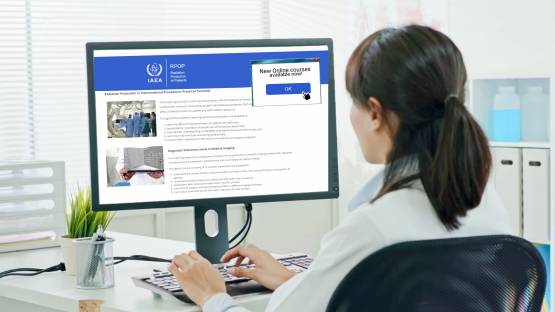Over 4300 users from more than 100 countries have used the three new IAEA interactive e-learning modules released this year on diagnostic reference levels in medical imaging, radiation protection in interventional procedures and radiation protection in dental radiology. These courses aim to help healthcare professionals strengthen radiation protection in medical procedures using ionizing radiation.
"Around the globe, there are over seven million healthcare workers involved in radiological procedures whose radiation protection knowledge and practical skills are critical to ensure quality and safety,” said Jenia Vassileva, IAEA Radiation Protection Specialist. “The new online courses will help build these competences. The three new topical subjects were selected as there are limited learning resources for medical practitioners in these specific fields.”
The material is in line with the IAEA International Basic Safety Standards, Safety Guide on Radiation Protection and Safety in Medical Uses of Ionizing Radiation and good practice guidance, and can be also used by the regulators and inspectors who want to upgrade their knowledge. The diagnostic reference levels course, for example, addresses the challenges of implementing this methodology, which is often a requirement of national regulations. However, users do not always have the step-by-step information on the exact process to establish and utilize this important tool for optimization of patient radiation protection.





